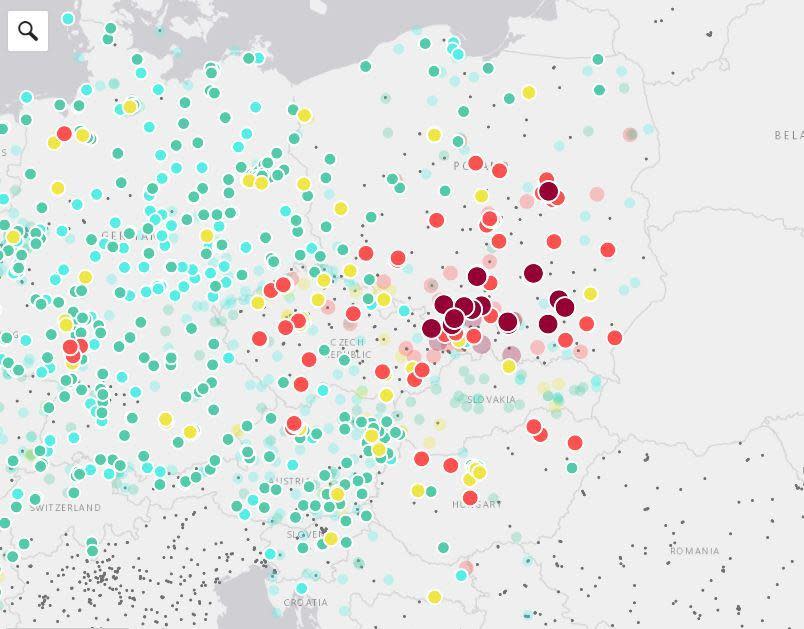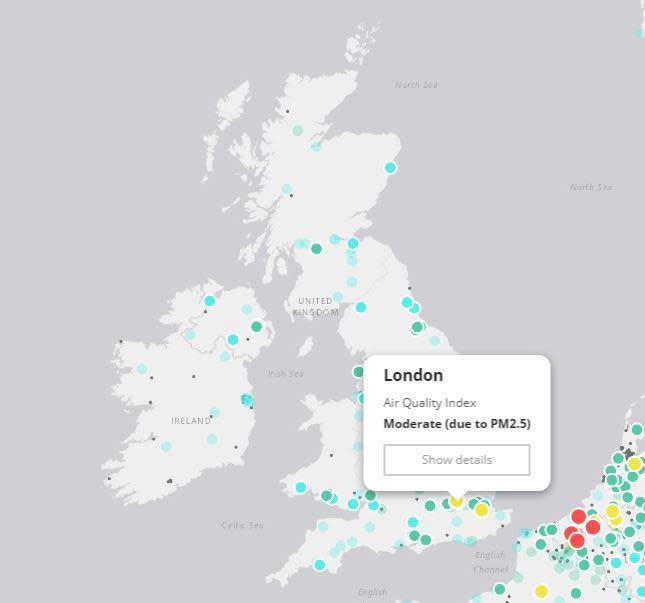Interactive map shows air quality across Europe in real time

An online interactive map pinpoints the areas in Europe that are worst affected by air pollution.
The map which went live on Thursday allows internet users to check air quality in certain destinations in real time.
Launched by the European Environment Agency (EEA) and the European Commission, the “European Air Quality Index” gathers data houly from over 2,000 monitoring stations across Europe.
In a statement, the EU Environment Commissioner, Karmenu Vella, said: “Air pollution is an invisible killer, so the air quality index is needed to inform European citizens on the state of the air they breathe."
On the map, stations are colour coded to indicate the levels of pollution in that area. The key goes from light green, indicating low levels of pollution, to dark red, indicating high levels. Grey dots mean that there is no data in that area.
Areas with a dark red dot will have high levels of nitrogen dioxide, sulphur dioxide and tiny particles that can easily enter the bloodstream and lungs.
The worst affected areas included parts of Poland near the Slovakian border, parts of Spain and the Former Yugoslavia Republic of Macedonia.

The station in London showed moderate levels of pollution.

Speaking to AFP, EEA executive director, Hans Bruyninckx, said: “It's important that citizens are aware that yes, we've done quite a bit in Europe on air pollution, we've seen significant improvement over the last decade... but we're not there yet,"
She said that the map has been made available for everyone in order to “start a dialogue” and inform decisions about “safe guarding people’s health, especially in cities”.
Despite the fact that air quality has improved in Europe in recent years, according to a study published by the EEA in October, there are still some areas that exceed European standards.
"80 percent of citizens in European cities are actually living in air quality that is not up to standards of the World Health Organization," Bruyninckx said.
In Europe, air pollution remains the single largest environmental cause of premature death.

 Yahoo News
Yahoo News 